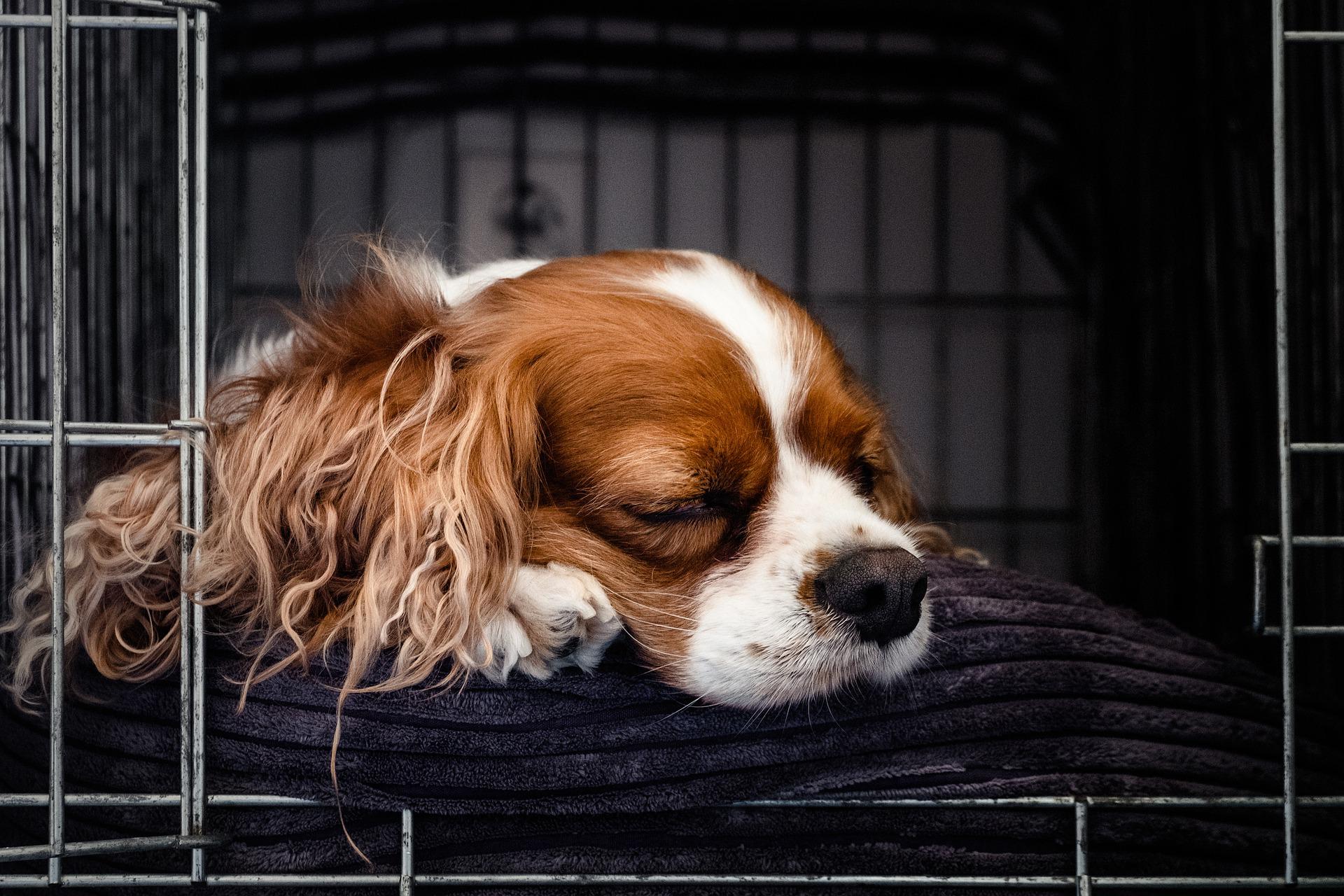
When and How To Use a Crate for Your Dog
Posted by Grange Co-op on 17th Aug 2022
Dog crates, dog kennels, and pet carriers are all tools that help secure pets and aid in transportation. It isn’t unusual for people to get the names of these products confused. While all three products keep pets contained, each type has unique purposes and benefits.
Dog Crate vs. Dog Kennel
People sometimes use the terms "dog crate" and "dog kennel" interchangeably, but they aren't exactly the same. Although crates and kennels are typically made from wire, a dog kennel is a larger, more permanent structure.
People who keep their dogs outdoors often use a dog kennel to contain them. This is especially common for people or organizations that house working or hunting dogs. Keeping these dogs outdoors prevents them from going through drastic temperature changes when they go out into the field. Containing them in the kennel ensures the dogs don’t run off and get lost or hurt. A kennel also keeps predators away from your dog.
Optimizing Your Dog Kennel for Comfort and Safety

Dogs shouldn’t be left in kennels without any protection from the elements. They need a dry, comfortable place to sleep that is out of direct sunlight. Kennels should have a roof, a dog house, and waterproof dog beds. If you don’t have access to a kennel roof, a heavy-duty tarp and tarp straps will do in a pinch.
What Is a Dog Crate?
A dog crate is smaller than a kennel and is lighter in weight. Crates are usually used indoors. They provide dogs with enough space to stand and turn around. The most common style is a wire dog crate with a solid tray bottom and one or two doors.
While these crates are easy to move, they aren’t designed for travel or taking your dog to appointments with the vet or groomer. This is something you might do with a pet carrier.
Despite the popularity of crate training, some dog lovers think of crates as cruel, used to punish dogs for bad behavior. They might feel guilty for putting their dog into an enclosed space that looks like a small jail. But when used properly, a crate gives your dog a place that makes it feel safe and secure.
While kennels are used outdoors except in places like animal shelters or K9 barracks, dog crates are usually kept indoors. They are not meant as housing for dogs, but more as a temporary enclosure to limit a dog’s access to your home. There are exceptions with soft, collapsible travel crates that are easy to take along on trips or outings. They keep your pet safe when going to unfamiliar places or on long trips in the car. You can fold them up and put them in storage once you don’t need them anymore.
Crates can benefit dogs — from puppies to seniors — at one time or another. Crate training a puppy makes it easier if they end up needing to be crated for other reasons later in life. The crate is already familiar to them, and they will think of it as a safe, secure “home within their home.”
Crate Training a Puppy
Puppies are full of energy and lack the potential for discipline that will come later. They are naturally curious, getting into anything and everything within reach. One of the benefits of crate training puppies is that they keep your dog out of trouble when you can’t supervise them.
More importantly, crate training a puppy makes housebreaking easier. It’s in a dog’s nature not to soil the place where they sleep. Their time in a crate teaches them to hold and strengthen their bowel and bladder muscles. The trick to success is getting your puppy outside quickly once you let them out. When they “go” outside, reward them and encourage them with positive reinforcement.
Crate training a puppy will take some effort and time. You never want to make your puppy feel like it is being punished. Follow the process recommended by the Humane Society to help instill confidence and security in your pet.
Reasons for Using Crates in Adult and Senior Dogs
Like people, adult dogs can develop health issues. They might need to rest their joints or take more frequent naps. Dogs with pain often don’t tolerate other animals or people like they did when they were younger. Having a dog that is already crate trained makes it easy for you to keep them sequestered when it is necessary.
Dogs that are ill might not have control of their bladder or bowels. As they age, “accidents” become more common. Dogs that used to roam your home might need to be contained while you are away.
Some dogs are anxious, making them even more prone to loud noises or big gatherings. In addition to giving your dog calming supplements, give your dog a crate with a soft blanket and something draped across the top for more privacy and security.
Older dogs think of crates as a safe haven — a place they can find security when there is too much activity going on around them. When it gets too noisy during the busy, loud holidays, for example, during the 4th of July and fireworks, it gives them a refuge from the noise.
Shop for Dog Crates, Kennels, and Carriers at Grange Co-op
There are many benefits to crate training dogs. If you need help finding the right style and size of crate for your dog, contact us. A Grange Co-op expert is here to answer your questions.
